If you read my last blog, I discussed at length an internal conflict regarding my artwork and the possibility of taking it to a higher level. I found this was a good way to process my thoughts, despite reaching no conclusion*, and thought I'd write again about a pattern I've begun to notice.
*Rereading the blog, with the mindset of someone other than myself, I can see that settling for just good enough would be an unwise decision. I feel no rush to pursue a graduate degree, but am leaving my future open. Perhaps I should evolve my work on my own and revisit this question later.
The pattern I've noticed is in the art I'm responding to from others, and I'm feeling it may be an indicator of a direction to try in my own work. I'm going to jump right into the work and allow you to notice a pattern as well, and please leave a comment if you have an insight that may help me understand this pattern better!
So, right now, I feel that my pastel landscapes are the strongest work I create, and I want to continue to mature these. So far, my biggest inspiration has been David Fullam, a former professor at my alma mater who retired the year I was born, and passed away a few years before I left high school. I found an exhibition catalog in my school library a few years ago, from a solo show he had in 2007, and the moment I found a copy for sale online I snatched it up for myself. It seems the best way I've found to view and respond to his work, since he is no longer practicing (for obvious reasons.)
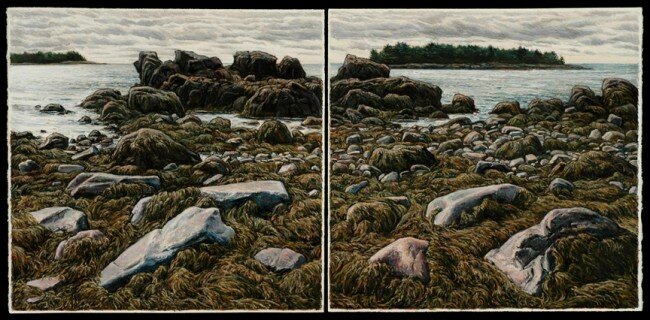
"Untitled" David Fullam
Pastel, oil pastel, oil stick and colored pencil on paper, 32x67
https://www.clarkgallery.com/artists2/david-fullam
I found the combination of different media that don't play nicely fascinating, most especially his words about this process in the "Land Marks" catalog I have. This is something I've started, slowly, to explore in my work, and a direction I want to continue.
However, I'm finding my paintings too straightforward in responding to reality in a nearly-photographic way. Rendering what I see is still what motivates me. I want to find a more creative approach, though, to add something to my work that makes it more than the scene was when I saw it.
The idea of more directly composing an image beyond the reference images I take started over a year ago, when I got a little obsessed with the work of Vermont artist and homesteading mother, Loré Pemberton.



The three Pemberton paintings which I have prints of, hanging above my bed: Gather, Late Summer Garden, and Shepherdess. https://www.lorepemberton.com/
Pemberton's work has interesting stories composed throughout. None of these scenes are chance encounters- they are deliberate and full of life. I'd like to incorporate some level of planning into my work- not this much, as part of my process is bringing attention to overlooked, everyday sights. But some forethought like hers would heighten the work.
The previous two artists have inspired me a lot longer, so I don't think they fit the pattern I've noticed as much. But I must acknowledge the impact they've had and continue to have upon me.
Now for the real strong pattern. Again, if you notice common threads, even between those above with those below, please leave a comment. Your words could have a major impact on me with the junction I'm at right now.
Up first is Meg Fatharly, a printmaking and collage artist, but I'll be talking only about her collages.


Collections of collages by Meg Fatharly, otherwise known as @printcessmeg via Instagram.
Fatharly's collages have so many qualities that make them magical. They have strong shape, pattern, and color, and the textures and thickness of the papers she uses give them extra depth. I love that she builds the objects to arrange into the scene (or at least, that's what it appears she does.) For example, the bottom-right collage on the wooden background shows a basket. It looks as though she painted paper, cut it into strips (either before or after painting) and wove the strips together. Then she took this new material she had created and cut it to shape, added handles, and finally placed it in the collage. I love that each object is a piece of its own. These collages are charming in the way that dollhouse furniture is charming. Who doesn't love a playful, bite-size slice of life?

I've been directly inspired by her in creating these collages. Since they are so closely inspired, I never felt comfortable offering these pieces for sale, and instead viewed them as a passion project or hobby. (That could be a whole other blog post- the importance of having interests that you don't monetize. We artists struggle with that sometimes.) But this approach to collage, as the building of pieces to use in the whole, has changed the way I feel about the collage process, and I'd like to find a way to use this in my work and make it my own. These dollhouse-like scenes are fun to make, but not the direction my professional quality work will take. I think the creation of physically separate elements to be arranged as a whole is what fascinates me. This can be replicated with lots of different media... lots to explore.
Then there's Michelle Morin.
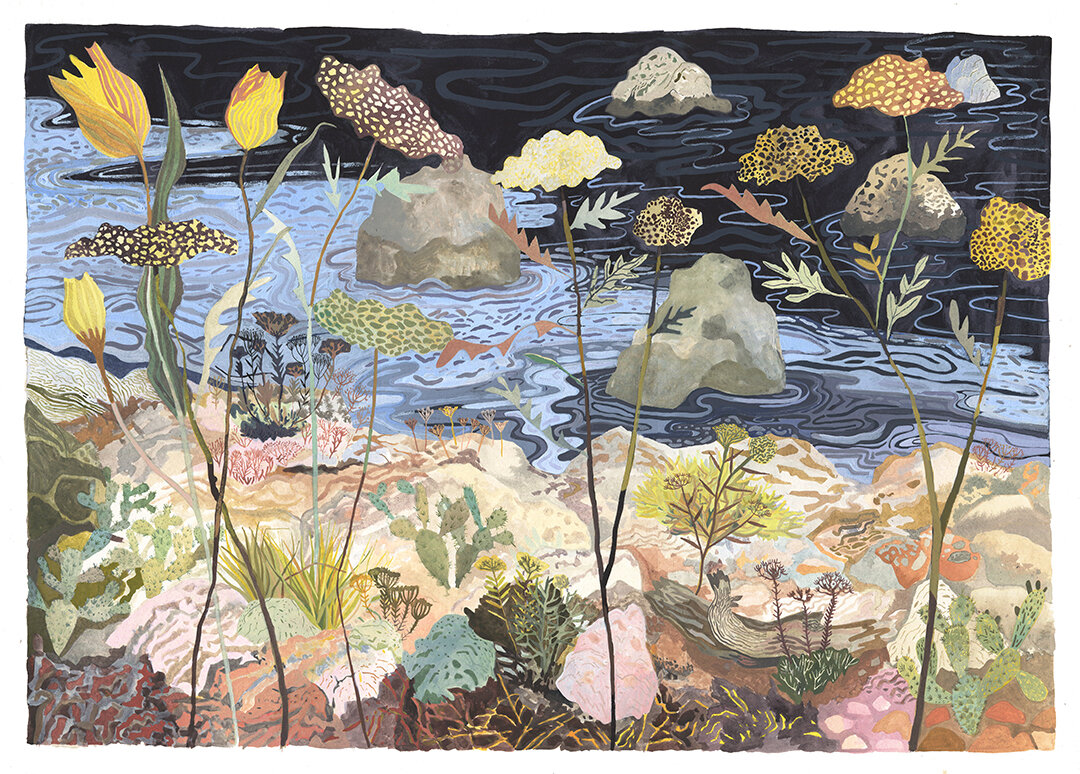
"Coastal Tulips" by Michelle Morin, acrylic gouache on paper, 18x24
https://michellemorinart.com/
Her sense of color, pattern, and compositional design are magical, ethereal. I might need to do some master studies in my sketchbook, just to train my eyes and hands a little closer to this way of thinking. Her work helps me realize that representational and abstract can be one and the same. This work is representational, but can you identify every thing in the scene? Probably only she can, or maybe a skilled marine botanist. But the colors and textures suggest a certain idea of the things you find on shore.
The idea of using just enough to make it interesting has been in my process, in part, for years, too. It's a tenet of minimalism, so it might surprise you that it's in my mind. But I look back at some of my earliest work with any semblance of conceptual value- back in late high school- and I remember my AP art portfolio in junior year. I was interested in creating a series of still life paintings using a single fruit and mirrors. They turned kaleidescopic, the fruit decaying over the days I painted and varying stages of ick in each reflected angle. In this way the aesthetic quality was not minimalistic, but the conceptual making process was. After painting a dozen oranges, I threw the single one that ever actually existed in the compost bin.
Back then I still rendered with a goal of photorealistic detail. In the years since, the concept of less-is-more has wandered into the picture plane more and more, as far as details go. (Expect no blank canvases from me.) Partly due to a slight tremor and possibly less-sharp eyesight, the big picture matters more. I like to tell people that in my paintings, I'm not trying to say leafleafleafleafleafleaf, I'm trying to say tree.
Switching gears again, then there were more artists I found while spiralling about grad school. I got some great advice to research the instructors, both in my freshman year at the college I dropped out of and after graduation from the woman who told me I needed a master's degree. I was reminded too of some other artists I admire. These I'll write less about, and simply allow you to notice some similarities.
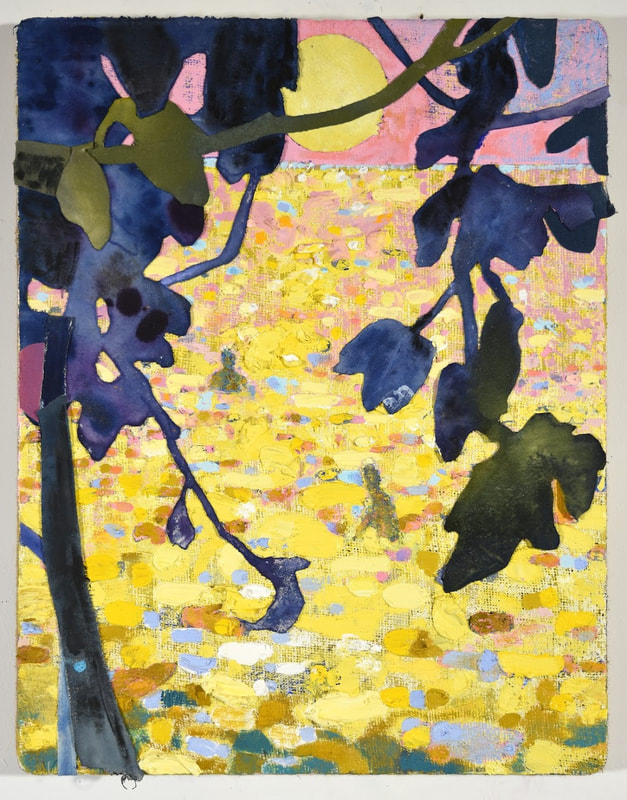
"Summer" Ben Reeves, 31" x 24" oil on burlap with acrylic on canvas collage, 2020
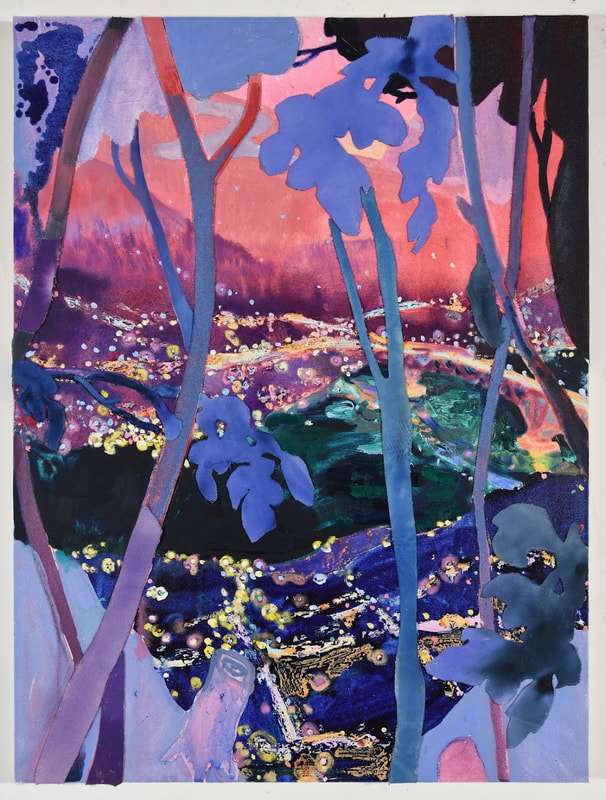
"Second Narrows" Ben Reeves, 40" x 30" oil and acrylic on canvas with acrylic on canvas collage, 2020
https://www.benreeves.org/
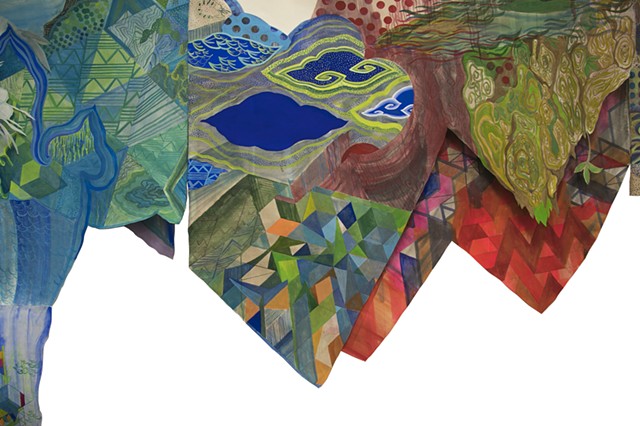
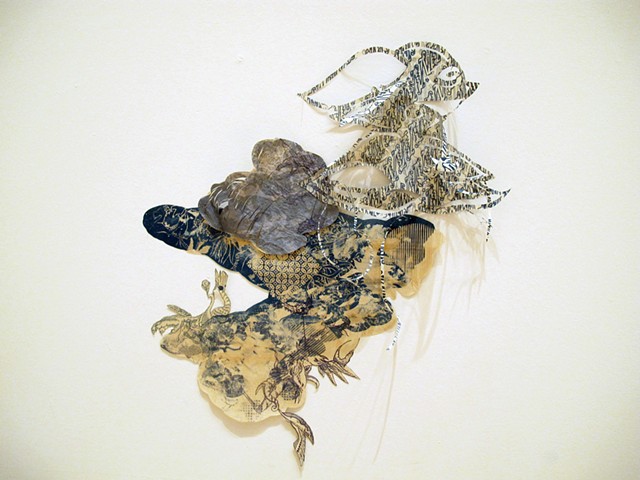
Ben Reeves and Diyan Achjadi are both instructors at Emily Carr University in Vancouver, Canada.
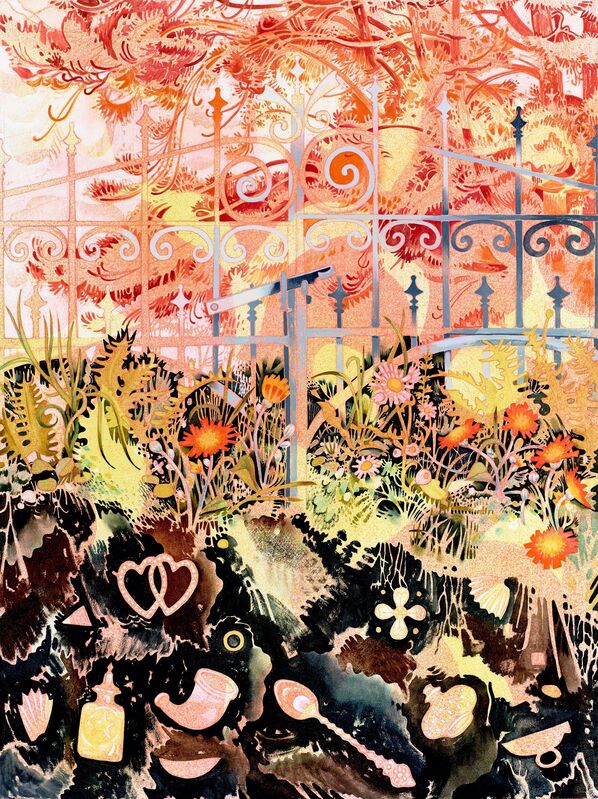
"Our Sum Of Life" Hilary Irons, Oil and acrylic on panel, 18x24, 2020

"Clementine's Bookshelf" Hilary Pecis, acrylic on linen, 74x64, 2021
Pecis seems to wander from subject to subject and the work still reads cohesively. Oh, am I jealous of that freedom!
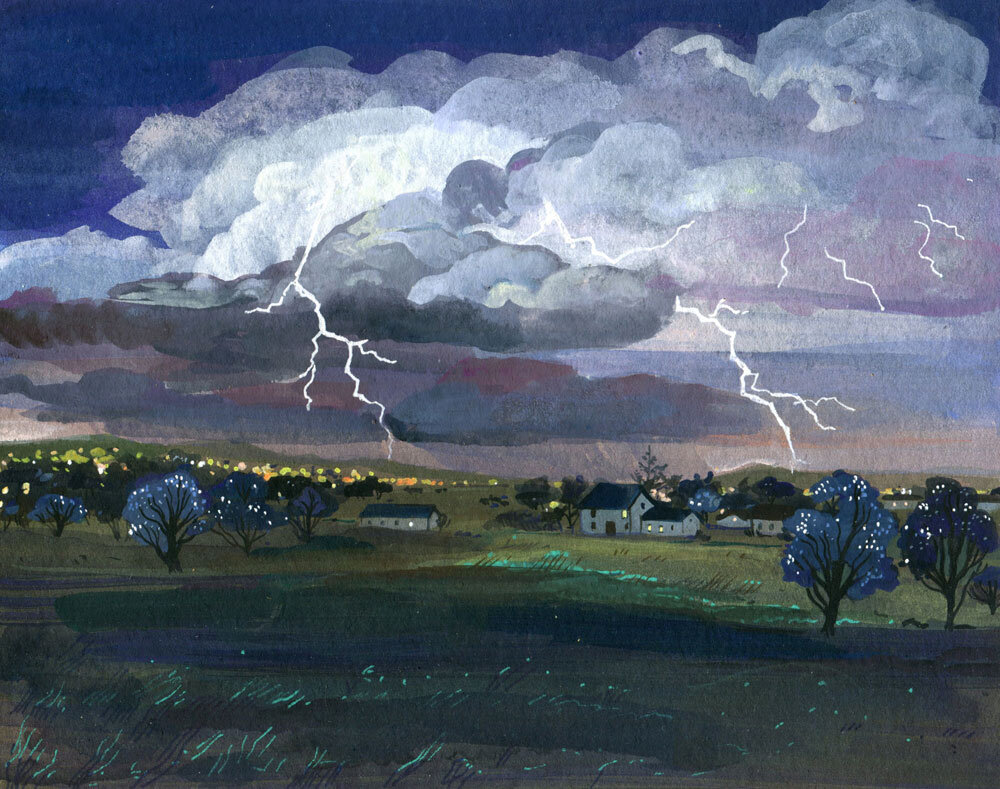
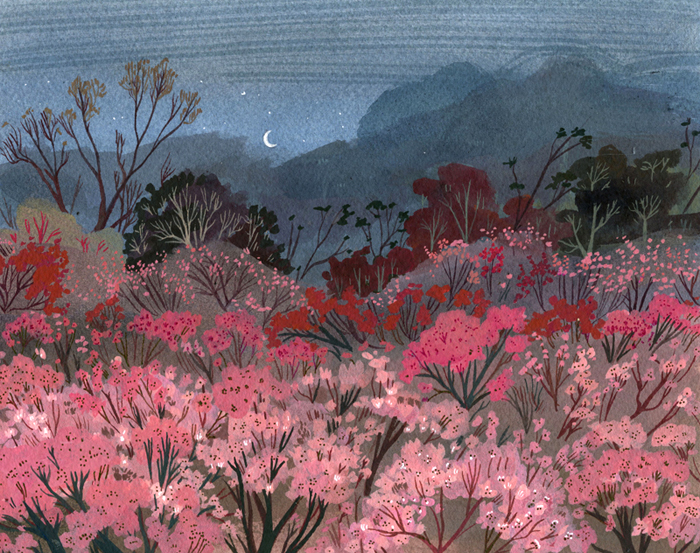
Some works by illustrator Becca Stadtlander, from http://www.beccastadtlander.com/#/places/


Works by Elissa Lincoln, https://www.elissalincoln.com/ or @elissa.lincoln on Instagram.
I want to know what you noticed about these works. I hope you can make some mental notes before I go into what I noticed.
I have a lot of reflecting to do.
All these styles have an illustrative quality to them that is drawing me in. This makes them more whimsical than my paintings. I'm not looking to become an illustrator, but some of these qualities could deliver some more visual interest to my work that might go a long way.
Many of these pieces have depth via layers, either physically laid atop one another or implied within the painting. Maybe that is something that's bothered me about my work; having worked primarily from photograph, my subjects are flattened more than these works.
These colors are whimsical and imaginative. I received a comment at my BFA show about my work relying on local color too heavily- that is, what I actually see. I've run this feedback by several people with varying degrees of artistic training and all of them called BS on needing to make a change, but I still can't help but wonder what would happen if I tried. At the worst, I might have a few bad paintings. And that's how you get better paintings.
Speaking of which, I think the most frustrating thing about feeling like I'm on the edge of something new is that I can't simply get there. My hands don't know the patterns of movement to make the work I'm thinking about, it will take a few paintings. My eyes don't know how to see the colors differently than what I've been doing. Perhaps some live painting, reacting to colors in the moment rather than through a photograph, will train them in the differences. Normally when I've gotten an idea, I can sit down a few times and then see it completed. This path might last weeks or months, if I'm lucky to be that quick. And let's hope that it's not just a momentary fascination, that I can stick it out long enough to see some results. (Another artist problem.)
As of publication time, I've started another painting with the goal of exploring this new direction in my work. I don't expect this to be a great piece. But maybe in a few days or weeks when I've finished it, I'll have a little more direction than right now. I should either know this direction is going nowhere, or that it's going somewhere. I'll be sure to let you know when I've found out!
Jackie


2 comments
Thank you, Maureen! That’s a great idea, to just play and explore. For some reason I felt that a really big step in a new direction would give me the answer, but now that I read your comment I can tell that’s more the way that change happens- small steps. <3
Jackie- I like these artists you have chosen. I can see your work going the way of Michelle Morins. I think maybe you should play like you are a brand new artist, work small and quick to start. Don’t think too much. Treat it like play. No expectations, just exploration. You can also continue to work in your usual methods on separate works but let these quick smaller pieces make you uncomfortable and embrace that feeling. You are trying to discover new things about yourself. Try everything!